Upcoming Fair & Festivals
India – a land of festivals, colors & vibrant celebrations. The wide spectrum of festivals celebrated in India is a manifestation of its rich culture & traditions, where all the festivals are different from each other! Each city boasts its own history & heritage, from Pushkar’s camel fair to Kerala’s boat festival. We have listed some of the most famous festivals & fairs of India, you can contact us for a customized itinerary for any event you’d like to attend. We craft special itineraries centered around these festivals so you can truly immerse & experience the spirit of these occasions.
Camel Festival
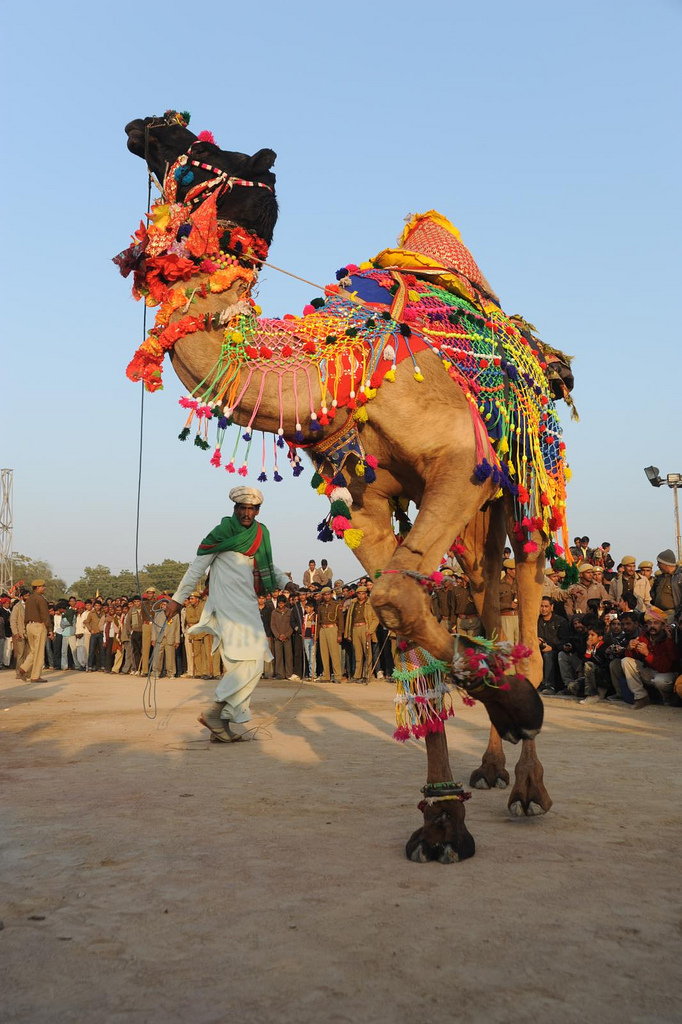
The Bikaner Camel Festival is organized in the beautiful city of Bikaner, Rajasthan by the state’s Tourism Department. Thedesert town of Bikaner is located in the Northern part of Rajasthan. The festival is organized every year in the month of January or late December to emphasize the value of ship of the desert – “Camel”. The two day festival is marked by different interesting activities.
This festival starts off with a magnificent procession of bedecked camels against the red sandstone backdrop of the Junagarh Fort (1588-1593) in the town.
It is a colorful spectacle of beautifully decorated camels that fascinates the onlookers with their charm and grace.
The festivity advances to the open sand-spreads of the Polo Grounds, followed by camel races, camel milking, fur cutting design, the best breed competition, camel acrobatics, camel bands and so on.
A sight of unusual camel activities like camel races, camel dances, and the bumpy, neck shaking camel rides highly fascinates the viewers. The camels display amazing footwork, dancing gracefully to the slightest direction of their riders.
Their displays and competitions accompany the color, music and rhythm unique to a fair in Rajasthan. The jubilant skirt swirling dancers, the awe-inspiring fire dance and the dazzling fireworks light up the fortified Desert City. The festivities reach to the peak with a different tenor as the renowned artists display a medley of folk dances and songs. Finally, the festival concludes on a fine note by magnificent display of sparkling fireworks which illuminates the desert city of Bikaner.
Nagaur Cattle Fair
The festive ambience during the Nagaur Fair of Rajasthan is permeated by the bellows of the cattle that are decorated by their owners and the general buzz that is associated with fairs such as these. The Nagaur Fair is well known all over the state of Rajasthan and the special guests of honor at this fair are- Cattle! Yes, Nagaur Fair of Rajasthan is has the unique distinction of being the second largest cattle fair in India.
Nagaur Fair of Rajasthan is one of the largest eight days cattle fair in the country, held annually during the month of Magh, between late January and early February. Nagaur awakens with the thronging of cattle, horses and camels accompanied by their colourfully turbaned owners. Nagaur is a sea of animals, trading over 70,000 bullocks, horses and about 25,000 camels on display every year. The quaint town of Nagaur, one of the most picturesque of Rajput townships, stirs to life during the Nagaur Fair of Rajasthan. Nagaur, a town in Rajasthan is located in between Bikaner and Jodhpur of Rajasthan, is mainly noteworthy for the rustic rural charm and colorful life seen on the way. If you are thinking that the Nagaur Fair is just a regular cattle fair, you are mistaken; Shearing sheep, handsome marwari horses to spices all compiled in one fair. The owners of the animals from all over Rajasthan come and camp around the outskirts of Nagaur while they buy and sell animals.
NAGAUR FAIR OF RAJASTHAN IN INDIA
The fair is organized by the Animal Husbandry Department and the Rajasthan Tourism Department also participates in it. Animal Husbandry Department controls the trading of this huge cattle market where as many as 2,00,000 livestock are brought and sold by some 80,000 farmers coming from as far as Punjab, Haryana.
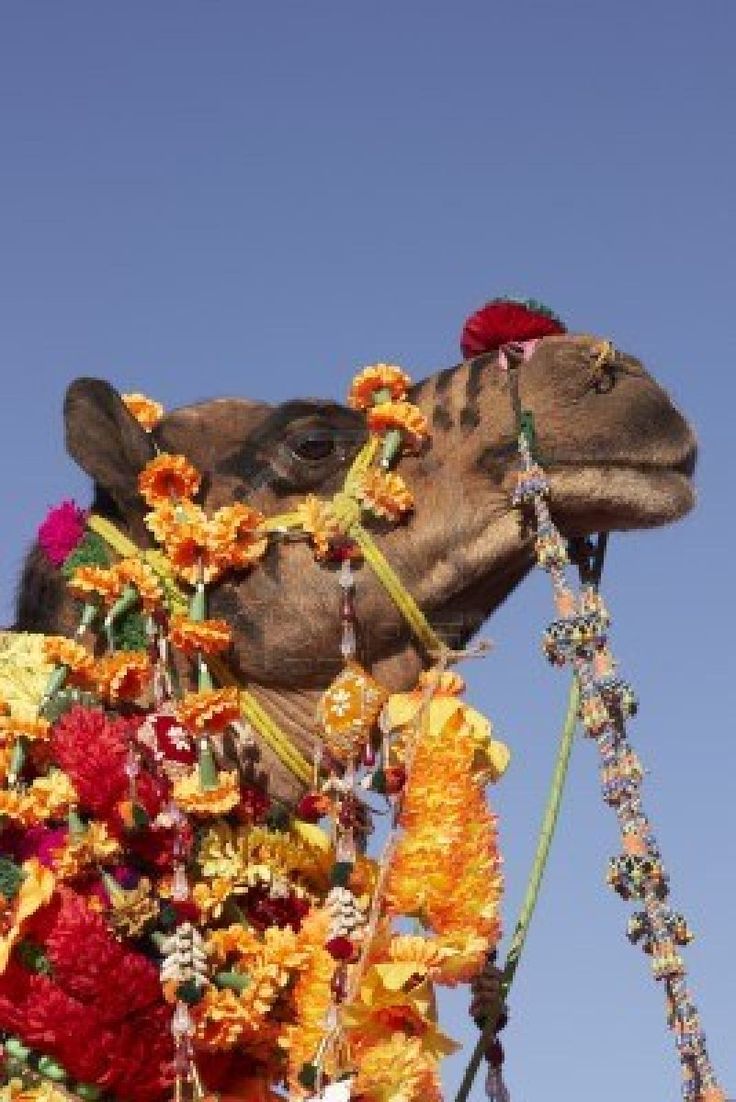
Khajuraho Dance Festival
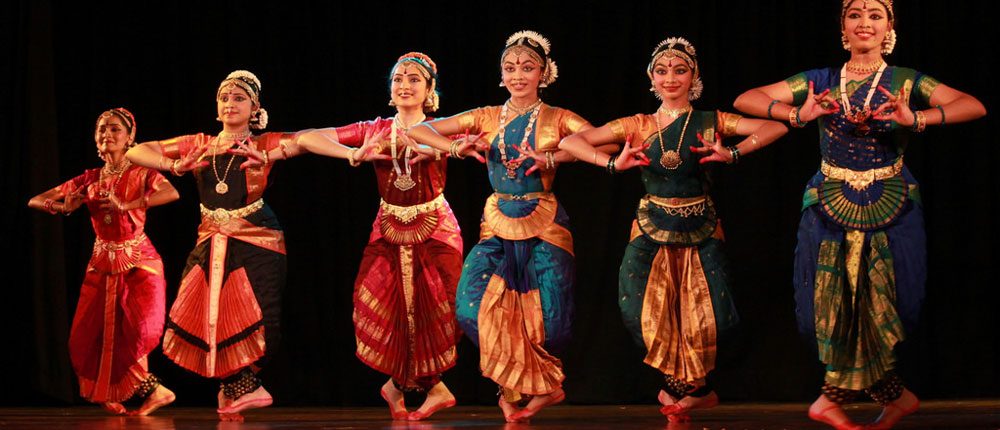
Famous Khajuraho dance festival is held in month of February. World renowned Artists will be performing Indian classical dance styles such as Kathak, Bharathanatyam, Odissi, Kuchipudi, Manipuri and Kathakali. The dances are performed in an open-air auditorium, usually in front of the Chitragupta Temple dedicated to Surya (the Sun God) and the Vishwanatha Temple dedicated to Lord Shiva, belonging to the western group. Come and enjoy the Beauty of Khajuraho Temples and richness of Indian Classical Dances.
Desert Festival
A herd of camels, locals dressed in colourful fancy dresses, camel races and polo matches, turban tying competitions, menwith long moustache, acrobats, puppeteers, and jugglers comes to ones mind as he hears of Jaisalmer Desert Festival. This exuberant Festival of Jaisalmer is held in January end or February every year in the sand dunes of Sam, 42 K.M. away from Jaisalmer. The celebration continues for three days. These three days of festival glorifies the rich culture of the region. The desert festival in Jaisalmer was started with an aim to attract foreign tourists, who always look forward to explore more and more facets of Rajasthan. This no-nonsense festival only showcases Rajasthani folk songs and dance to promote Jaisalmer culture and traditions. The festival culminates on ‘Purnima’ (full moon day).
The Rajasthan tourism organizes the Jaisalmer Desert fair/festival. Tourist help cell are setup to solve the problems faced by foreign tourists. The local administration monitors the arrangements and Medical vans equipped with all the essential medical facilities, are kept on call in case of emergency. The major attraction of Jaisalmer Desert Festival is to showcase the culture of the region and thus glorifying of the desert land. The annual desert festival is held on the backdrop of the Jaisalmer fort. The sand of Jaisalmer comes alive with the dazzling colors, vibrant music and laughter of the Desert Festival between the pinks of winters. The people dressed in brilliantly hued costumes, dance and sing the poignant ballads of valor, romance and tragedy. The fair has snake charmers, puppeteers, acrobats, folk artists and various competitions are also held here. The festival closes with an enchanting sound and light show in the moonlit night amid sand dunes with a promise to come back again next year.

Goa Carnival
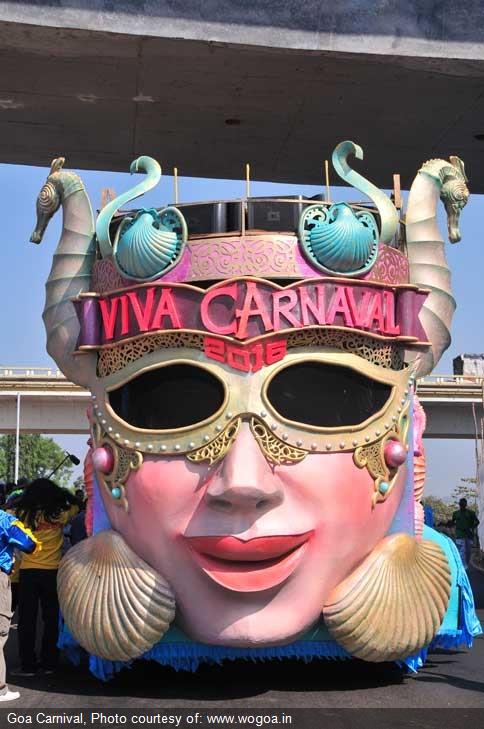
Goa Carnival – A Musical Extravaganza The best time to travel to Goa is during February because this is the time when one witnesses Goa getting decked up for thecarnival. Goa carnival is an eagerly awaited occasion where one forgets his worries and tensions and simply plunges into merriment and joy-making for three whole days. Goa carnival is all about fun and frolic.
Colorful processions and lavish floats parade the streets. Singing, dancing and masked people mark the uproarious and flamboyant Goan celebration. Most of the countries have carnivals but Goa carnival stands apart as the people of Goa have inculcated different items in the carnival that makes us experience the different shades of Goa. The carnival in Goa had its birth during the era of King Momo. He ushered in the Goa carnival just before the Lent season (Lent is the period of fasting and penance in the Christian calendar and corresponding somewhat to the Mohammedan fast before Ramzan Id). This festival of Goa usually starts off on Sabado Gordo (Fat Saturday) and concludes on Shrove Tuesday (Fat Tuesday)-the eve of Ash Wednesday, which is the first day of the season of Lent.
The streets are crowded for three days and it is nothing but a carnival of colors, a carnival of fun and a carnival of joy for the people of Goa as well as the tourists who make it a point to plan their Goa tour during that time. Among all the festivities and feasts of Goa Carnival and Shigmo are the most boisterous ones with great acclaim and enthusiasm anticipated by the mass with great fervour and excitement. Carnival in Goa is round-the-clock 3-day festival of color, song and music, providing a healthy amusement for all, young and old. For three days and nights, the fabled king Momo takes over the state and the streets become active with colour. The week long event is a time of festivity and enjoyment. The carnival renders an amusing aura in which everyone sings, laughs and dances on the tunes of music. Street Plays, songs, dances, and impromptu travesties jeer and display their dances and songs before a crazy and amendable audience. The popular cradle songs and nursery rhymes with colourful attires worn make the atmosphere as well streets more jovial. Innumerable competitions and cultural functions are held right through the three days. The contestants wear colorful costumes and designer masks. In such fun-filled surroundings people smear color on each other, instead of the flour, eggs, fruit and water that used to be used in past. The carnival is not celebrated anywhere else in India and was in diminution even in Goa in the past few years of Portuguese rule. Its resurgence with the freeing of Goa, and a hike to its tourism attracted thousands of tourists to Goa from all over the world every year!
Elephant Festival
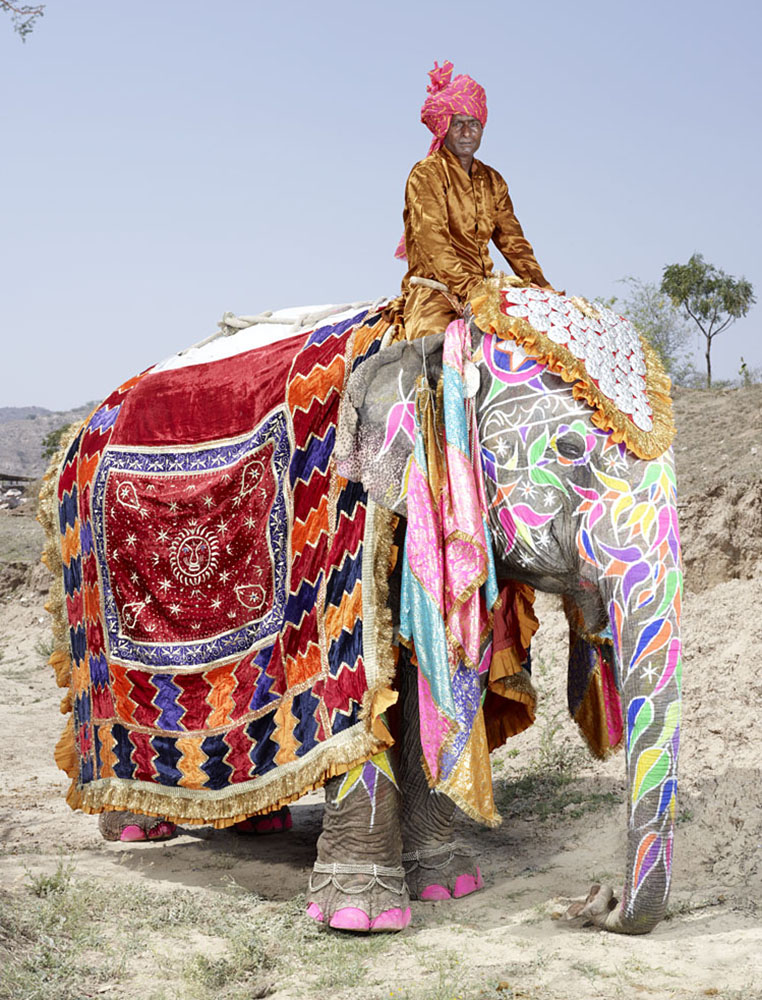
The Elephant Festival is an annual festival which is held every year in the Pink City, Jaipur. This matchless event is organisedon the full moon day of Phalgun Purnima which falls in the month of February/March. It is celebrated on the day before the festivals of colours i.e. Holi. From the ancient times, elephants have always been an important part of the Indian society. The Elephant-headed God, Ganesha, believed to be the remover of obstacles and foremost to all the gods, is revered and devotedly worshipped in all the parts of India.
They are also one of the most important parts of religious events, marriage ceremonies, processions, etc. and in the historic time, they were a significant part of the battlefield.For this festival, elephants are nicely groomed and clothed with colourful and embroidered velvets rugs and parasols and other heavy ornaments like huge elephant jewellery and anklets decked with bells. Intricate traditional Indian motifs are then painted on their bodies. Ear danglers and coloured brocade scarves adorn their ears and necks respectively. Their tusks too get jewelled up by adorning them with gold and silver bracelets and rings; while foreheads are beautified with royal looking head-plates. All this is done by their Mahouts (keepers/riders) after they are done giving their elephants a bath. Moreover, the Mahouts too bask into the sunshine of the festivities by perking up themselves in brocade jackets and royal turbans.This festival begins with the huge and enthralling procession of the royal elephants painted with different shades of colours, embellished with heavy silver ornaments, and embroidered clothes. The elephants enter the ground with their mahouts, thumping to the sound of nagadas and loud blows of bankiya, a musical instrument. The participant elephants are all females. Elephant polo, Elephant race, the tug-of-war between Elephant and 19 men and women are the special features of this grand festival. There are live performances of dancers and musicians too. In addition to this, in the procession there are chariots, lancers on horses, camels, and palanquins. This festival is enjoyed by a huge number of crowds including the visitors from different parts of India as well as abroad. This festival, organised by Rajasthan Tourism and has now become an important part of its’ annual events calendar. In previous time, this festival was held at the Chaugan Stadium located in the old city area of Jaipur but due to the increase in crowds and fame, its venue got changed in 2011 and has been shifted to Jaipur Polo Ground which is opposite to the Sawai Mansingh Stadium.
Hola Mohalla
Hola Mahalla or simply Hola is a Sikh festival, which takes place on the first of the lunar month of Chet, which usually falls in March. This follows the Hindu festival of Holi; Hola is the masculine form of the feminine noun Holi. Mahalia, derived from the Arabic root hal (alighting, descending), is a Punjabi word that implies an organized procession in the form of an army column accompanied by war drums and standard-bearers, and proceeding to a given location or moving in state from one Gurdwara to another.
This custom originated in the time of Guru Gobind Singh (1666-1708) who held the first march at Anandpur on Chet vadi 1, 1757 Bk (22nd February, 1701). Unlike Holi, when people playfully sprinkle colored powders, dry or mixed in water, on each other the Guru made Hola Mahalla an occasion for the Sikhs to demonstrate their martial skills in simulated battles. This was probably done forestalling a grimmer struggle against the imperial power following the battle of Ninnohgarh in 1700. Holla Mahalla became an annual event held in an open ground near Holgarh, a Fort across the rivulet Charan Ganga, northwest of Anandpur sahib.
The popularity of this festival may be judged from the fact that out of five Sikh public holidays requested by the Khalsa Diwan, of Lahore in 1889, the Government approved only two – Holla Mahalla and the birth anniversary of Guru Nanak. Hola Mahalla is presently the biggest festival at Anandpur. It will be appropriate here to discuss briefly the town and the participants of this festival.

Holi
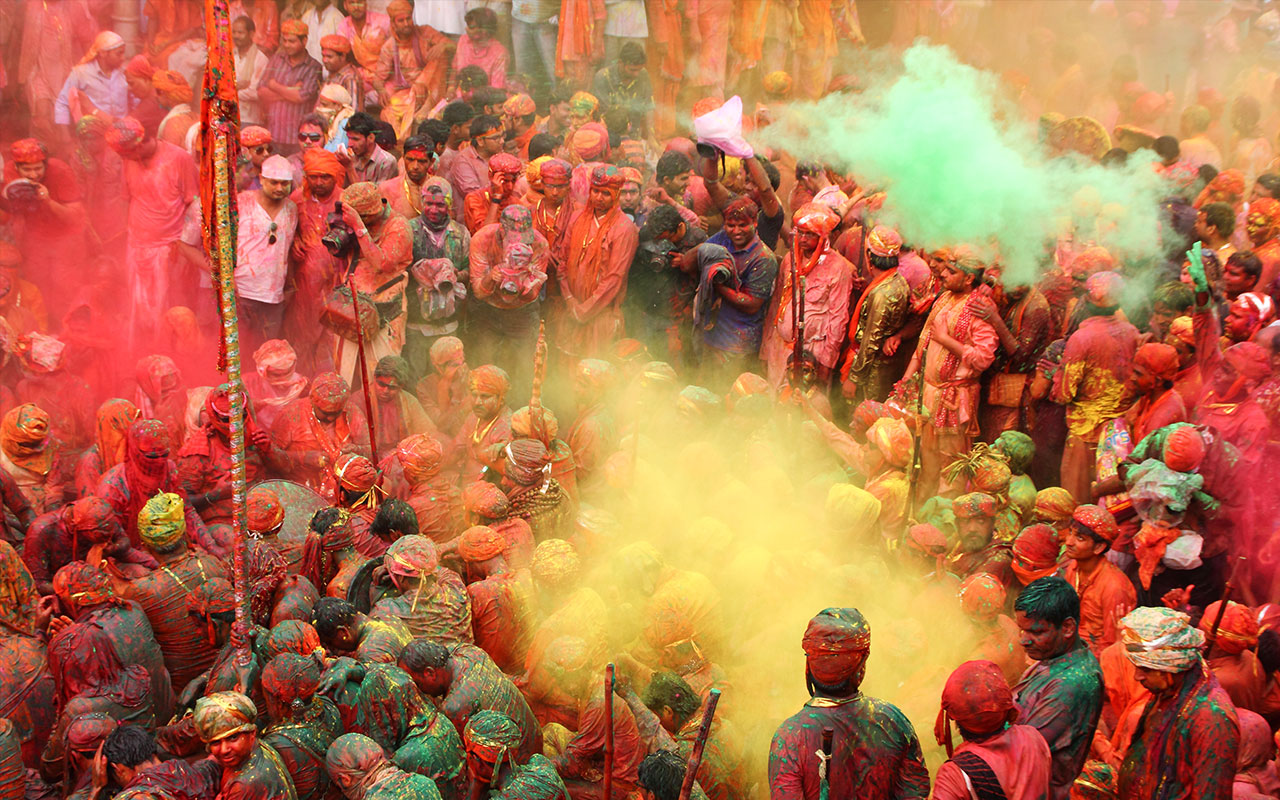
Holi is an ancient festival of India and was originally known as ‘Holika’. The festivals finds a detailed description in earlyreligious works such as Jaimini’s Purvamimamsa-Sutras and Kathaka-Grhya-Sutras. Historians also believe that Holi was celebrated by all Aryans but more so in the Eastern part of India. It is said that Holi existed several centuries before Christ. However, the meaning of the festival is believed to have changed over the years. Earlier it was a special rite performed by married women for the happiness and well-being of their families and the full moon (Raka) was worshiped.
Thrissur Pooram
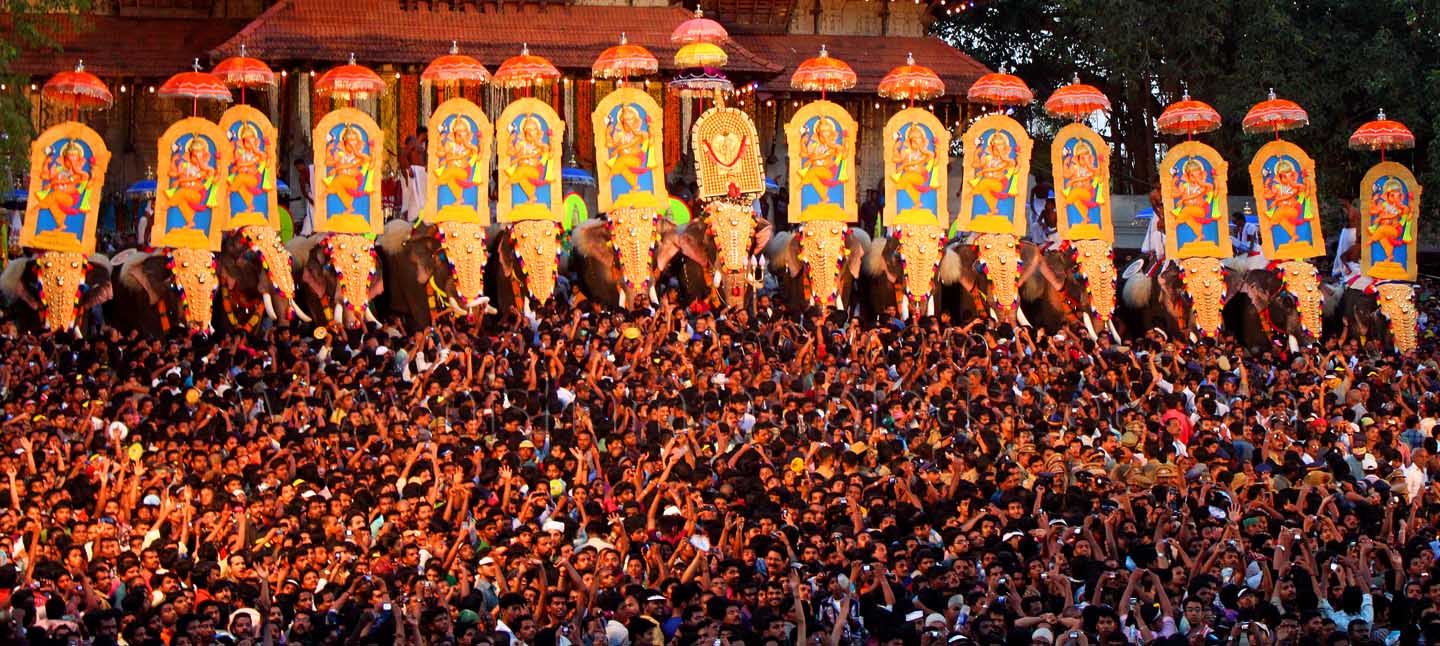
Pooram is the most colourful of all the temple festivals of Kerala. It is celebrated in Thrissur at Vadakkumnathan temple, dedicated to Lord Shiv, usually in April. The festival includes a magnificent spectacle of fireworks, an umbrella display competition and a splendid elephant procession. The best elephants of the state from the various temples in Kerala are sent to Thrissur to participate in the Pooram festival.
Hemis Festival
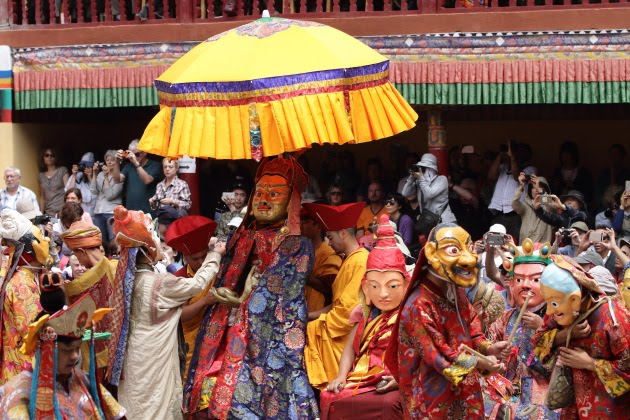
The courtyard of Hemis Gompa, the largest Buddhist monastery in Ladakh, is the stage for the famous ‘Hemis’ festival that celebrates the birth anniversary of Guru Padmasambhava. Local people are seen dressed up in their finest traditional garb for the occasion. Lamas, called ‘chhams,’ perform splendid masked dances and sacred plays to the accompaniment of cymbals, drums and long horns. The head lama presides over the function. The festival takes an auspicious turn every 12 years in the Tibetan Year of the Monkey, when the two-storey high ‘Thanka’ depicting Padmasambhava is displayed.
Urs
The Urs are held at Ajmer every year at the tomb of the Sufi Saint Khwaja Moinuddin Chisti, commemorating his symbolic union with God. Pilgrims from all over the world gather to pay homage. Qawalis (poems) are presented in the saint’s honour and religious assemblies (mehfils) and ‘fatihas’ (mass prayers) are held. The lakeside town attracts thousands of devotees of all faiths on the occasion.

Ratha Yatra
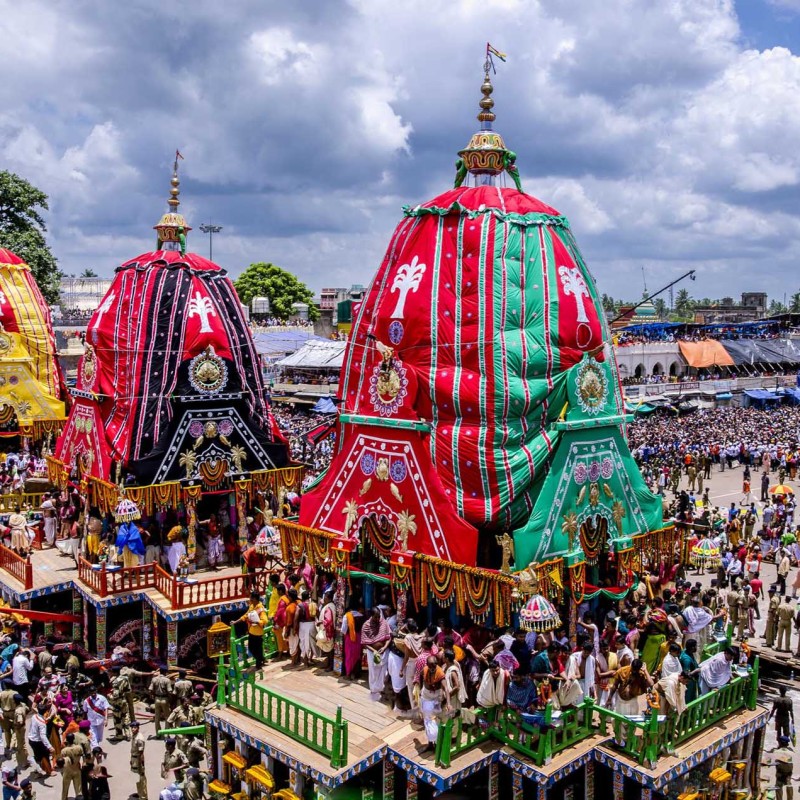
Rath Yatra is a major Hindu festival associated with Lord Jagannath (avatar of Lord Vishnu) held at Puri in India during the months of June or July. The Puri Rath Yatra is world famous and attracts more then one million pilgrims every year, not only from India but also from the different parts of the world. Rath Yatra in other words the Chariot Festival is the only day when devotees who are not allowed into the temple can get a chance to see the deities. This festival is a symbol of equality and integration.
The 3 deities, Lord Jagannath, his elder brother Lord Balabhadra and their sister Subhadra are worshipped within the temple, on this festival they are taken to the streets of Puri so that everyone can have the fortune to see them. The 3 deities make an annual journey to their aunt’s temple (Gundicha Temple), 2 km away from Lord Jagannath temple. The Jagannath Temple in Puri is one among the four most sacred temples in India. The other three are: Rameshwaram in south, Dwarika in west and Badrinath in north.The festival begins with the invoking ceremony in the morning and the chariot pulling on the roads of Puri in afternoon is the most exciting part of the festival. The 3 deities have 3 different chariots – the chariot of Lord Jagannath, Nandighosa, has 18 wheels and is 45.6 feet high, the chariot of Lord Balabhadra, Taladhwaja has 16 wheels and is 45 feet high and the chariot of Subhadra, Devadalana has 14 wheels and is 44.6 ft high. Every year the wooden temples like chariots are constructed newly. The idols of these three deities are also made of wood and they are religiously replaced by new ones in every 12 years.
Hemis Festival
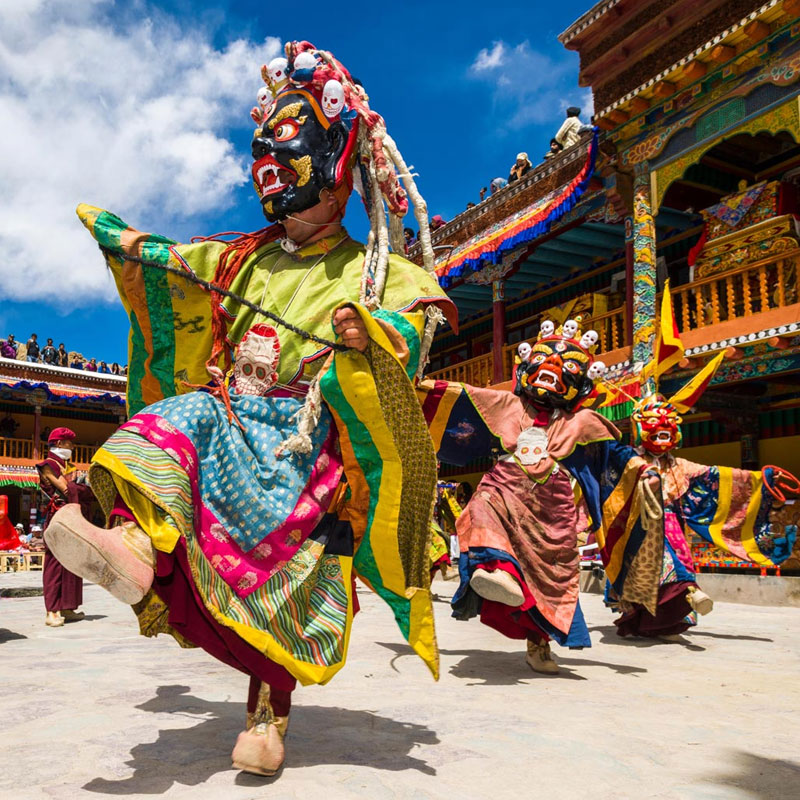
Hemis Festival
Dancing to the sounds of cymbals, trumpets and drums, the people of Ladakh commemorate Guru Padamsambhav each year on his birth anniversary. Held every year in the famous Hemis Monastery, it is filled with rich, colourful and vibrant ambience. Throughout the festival the locals get dressed in their bright and colourful traditional attire. And the sacred masked dance is performed along with long horns, musical drums and cymbals. During the festival, a lot of stalls filled with varieties of souvenirs and handicrafts are stored. You can shop and purchase a variety of products which can provide a memento from your trip. It certainly creates a colourful ambience; also an added feature in the festival is the presence of a funfair.
Nehru Trophy Boat Race
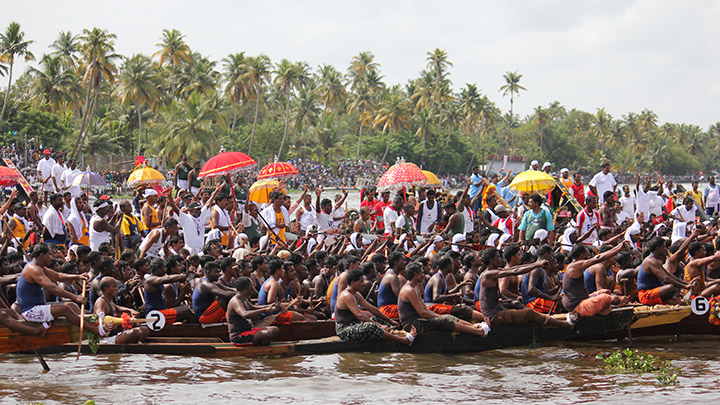
The Nehru Trophy Boat Race, named after Pandit Jawaharlal Nehru, is conducted on Punnamda Lake, near Alappuzha, on the second Saturday of August every year. During this fiercely fought boat race, the tranquil lake front is transformed into a sea of humanity with an estimated 2,00,000 people, including tourists, watching it. For the people of each village in Kuttanad, a victory at this race for their village boat is something to be celebrated for months to come.
Ganesh Chaturthi
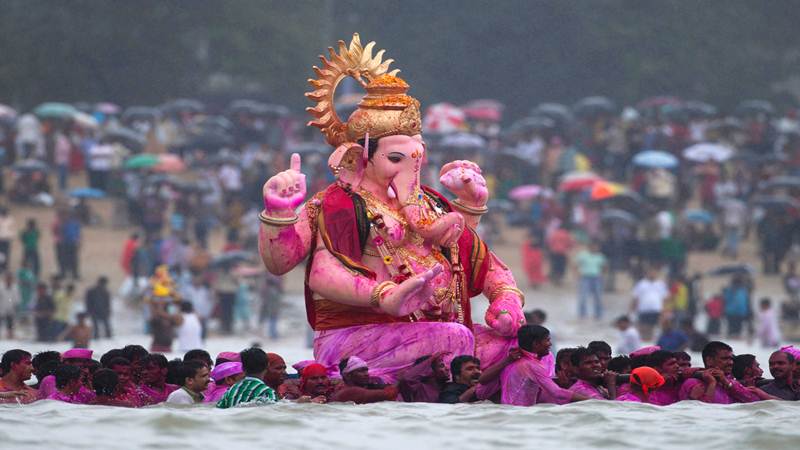
Ganesh Chaturthi is dedicated to Lord Ganesh (son of Shiv), the elephant -headed god of all good beginnings and success. The festival celebrated as the birth day of Lord Ganesh is a 10-day event. Idols of Ganesh and installed at home and prayers offered to them for 10 days, after which they are ceremoniously carried in a procession through the streets of the town and immersed into the river, sea or well. Classical dance, music performances, poetry recitations, folk dances, theatre and film festival are a highlight of this festival.
Dussehra
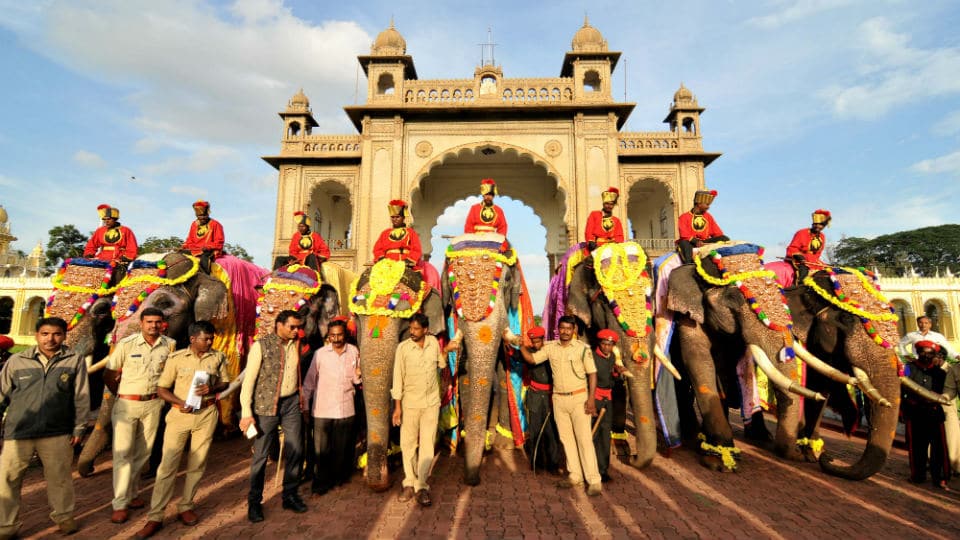
In the month of October, Hindus observe a 10 day ceremony of fast, rituals and celebrations to honor the triumph of Lord Rama over Ravana. Dussehra is a celebration of victory of good over evil.
The ‘Ramlila’ – an enactment of the life of Lord Rama, is held during the nine days preceding Dussehra. On the tenth day, larger effigies of Ravana, his son and brother – Meghnadh and Kumbhakarna are set to fire. The theatrical enactment of this dramatic encounter is held throughout the country .In burning the effigies the people are asked to burn the evil within them, and thus follow the path of truth and goodness, bearing in mind the instance of Ravana, who despite all his might and majesty was destroyed for his evil ways.
Hampi Festival
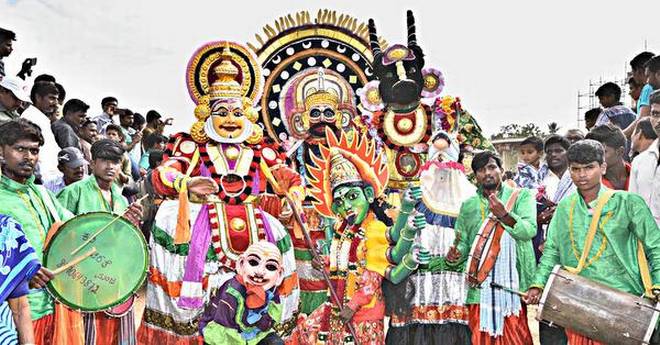
The magnificent ruined city of Hampi, Karnataka, once the capital of the powerful Vijayanagar Empire, comes alive during the three-day festival of dance and music, held in the first week of November. Organised by the Government of Karnataka, the Hampi festival includes dance, drama, music, fireworks, puppet shows and spectacular processions, all combined to recreate the grandeur of the bygone era. Decorated elephants, horses and men dressed in the military fashion of the Golden Era, are posted underneath the red, yellow, blue and white cloth ‘Gopuras’ are posted along the lanes of Hampi.
Pushkar Fair
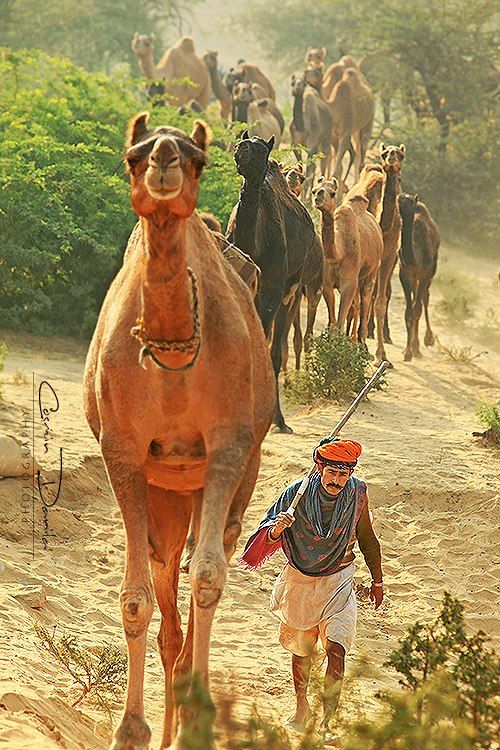
Pushkar is a sacred town for the Hindus, situated 11 kms to the North-West of Ajmer. The charm of this sleepy, lake side settlement so captivated the great Indian poet, Kalidas, that it found a place in his classic, Abhigyan Sakuntalam. The Great Hindu epics of Mahabharat and Ramayana make references to this religious place regarded to be Adi Tiratha. Evidence points to its having existed since the Fourth century B.C. Lake in the inhospitable surroundings of a desert is no less than a miracle. It is majestically nestled between three small hills and sand dunes.
Braham Temple (the only temple of Lord Brahma), Savitri Temple, Varah Temple, Pushkar Lake, Ghats, Apteshwar Temple, Rangnath Temple, Anasagar Lake, Rose Gardens, etc are prime attractions of Pushkar It also provides vacationers wonderful opportunity to indulge in exciting activities like camel safari ride on sand dunes of Thar Desert, trekking on picturesque hills, etc. Pushkar is also famous for its annual Pushkar Camel Fair. During this festival entire Pushkar comes alive. Visitors have wonderful opportunity to see trading of cattle/animals in the oldest form as barter system and several cultural shows depicting Rajasthani culture & tradition.
According to Hindus faith, gods releases a swan with a lotus in its beak (mouth) and let it fall on the earth where the Lord Brahma would perform a grand Yagna. Lord Brahma performed penance here for 60,000 years to have glimpse of Radha Krishna. The place where the flower of lotus fell was called Pushkar. Due to its immense holiness, sanctity and purity, the city is often called “Tirth Raj – the King of Hindus Pilgrimage Sites” by Hindus. Pushkar is the site Lord Brahma Temple, Savitri Temple, holy lake – Pushkar Lake and 52 sacred ghats. With religious & spiritual significance, several attractions and excellent accommodation facilities Pushkar has been also a popular destination of foreign tourists.
Konark Dance Festival

The sun temple in Konark is famed as a world heritage site. This is the venue of a joyous festival of classical dance and music which is held annually in December. A host of celebrated dancers from all over the country perform in the open air auditorium. The festival is a celebration of the much appreciated Odissi, Bharat Natyam, Manipuri, Kathak and Chau dance, a lavish feast for the eyes and ears. A crafts mela, with a variety of handicrafts and cuisine, is also organised during the festival. The festival is jointly organised by Orissa Tourism and Odissi Research Centre.
